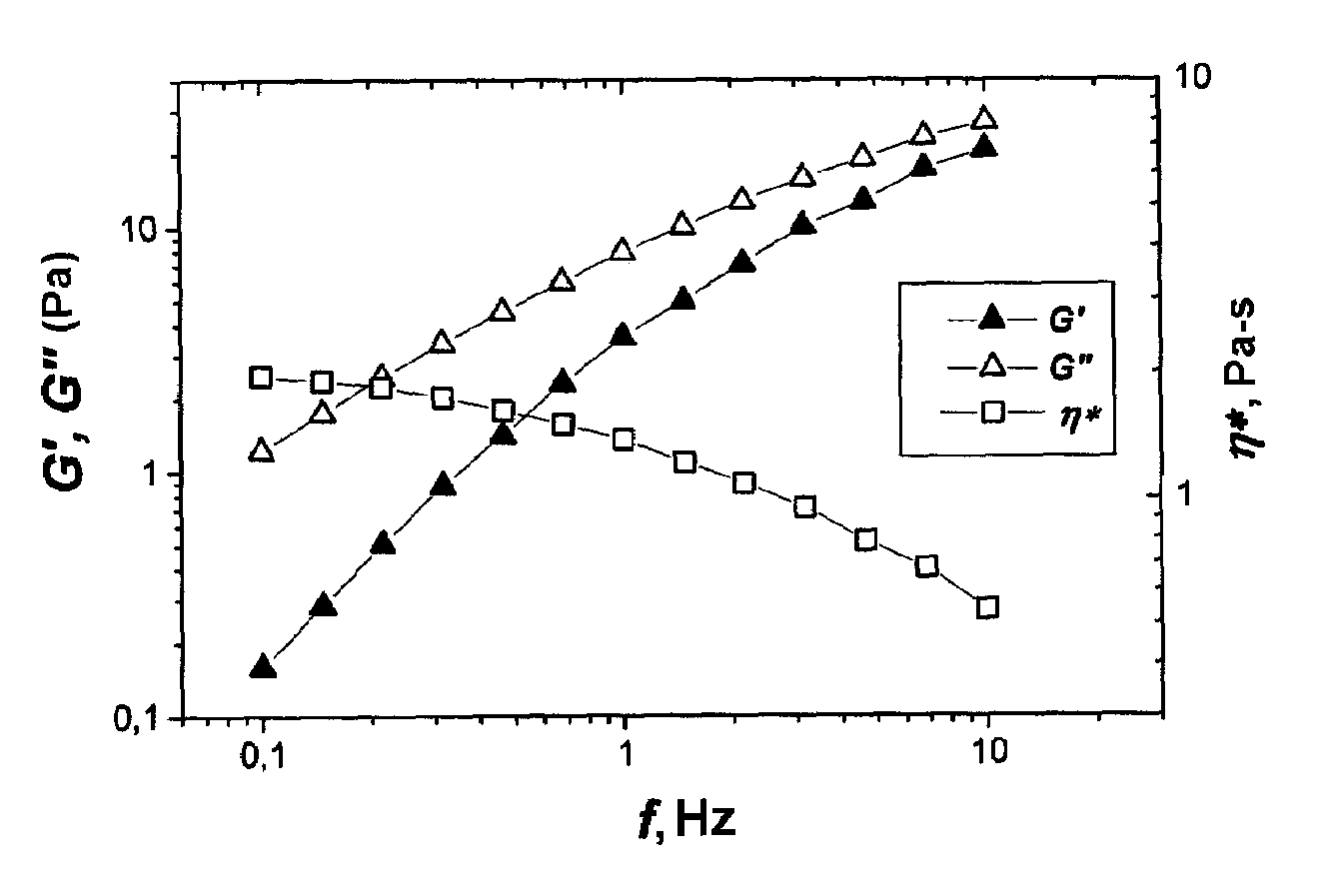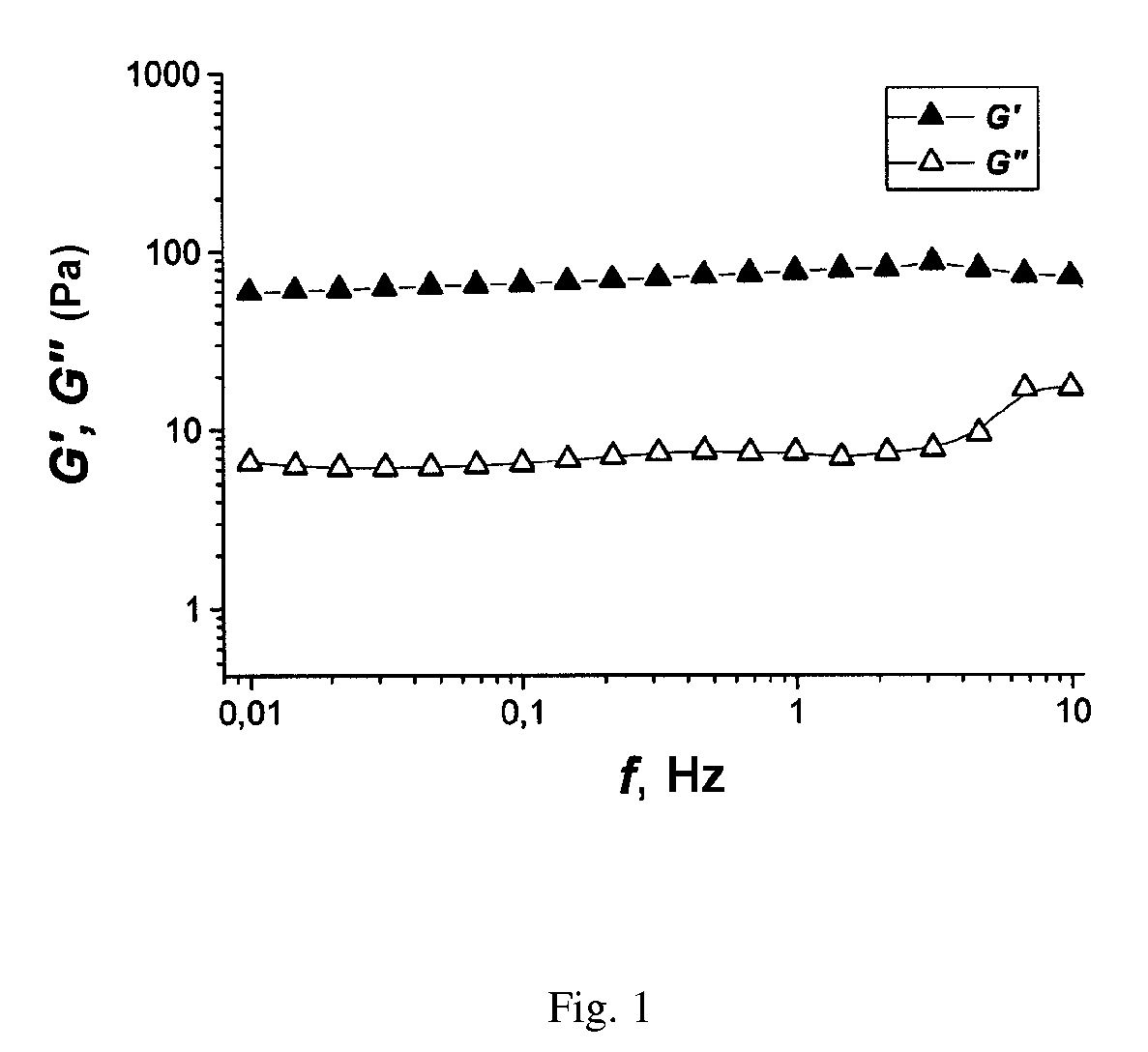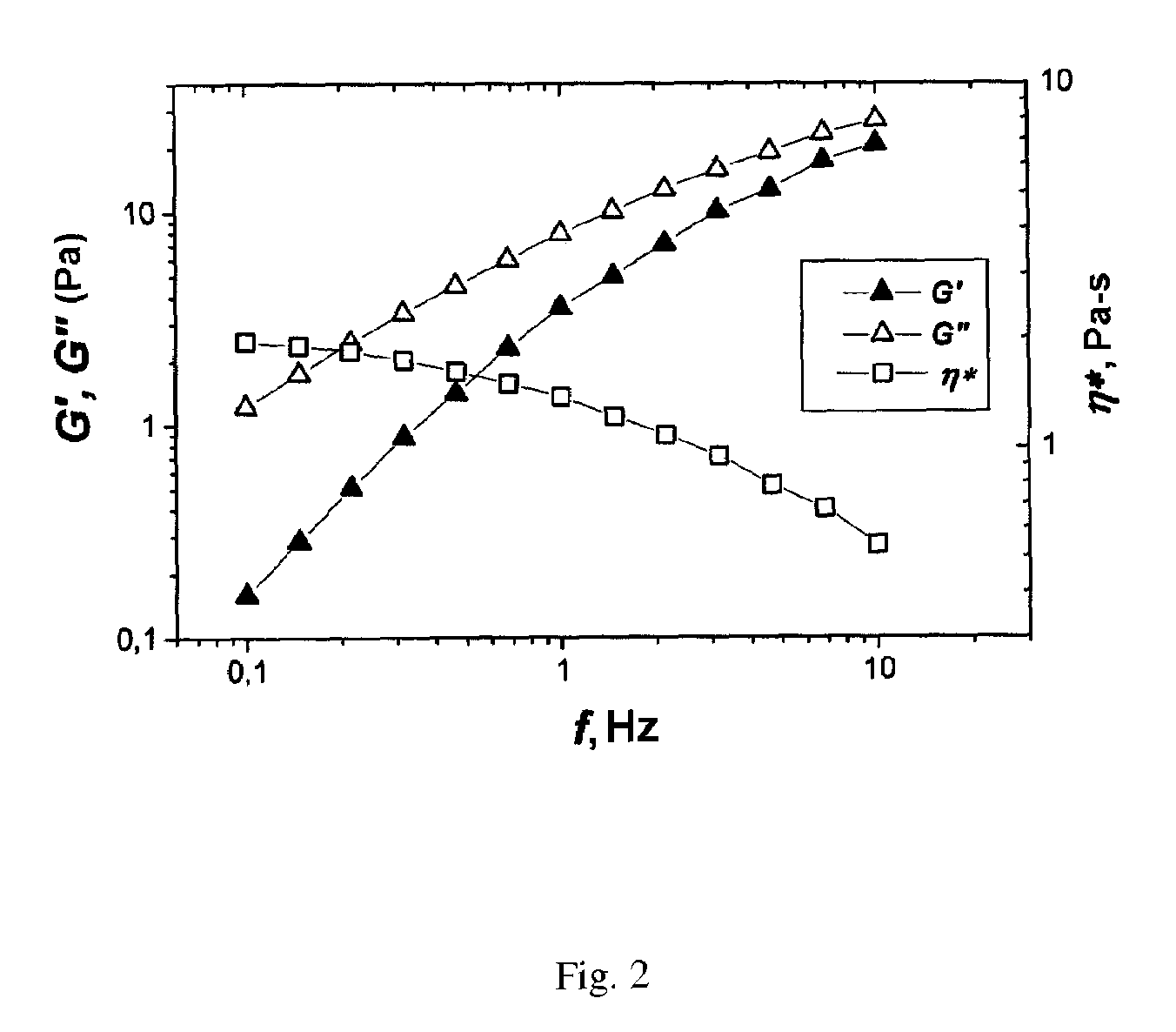Gelable liquid and method for selectively inhibiting the gelation of a gelable liquid
a gelable liquid and gelation technology, applied in the field of gelable liquid, can solve the problems of increasing the viscosity of the system, affecting the gelation process, so as to suppress the gelation and slow down the gelation process
- Summary
- Abstract
- Description
- Claims
- Application Information
AI Technical Summary
Benefits of technology
Problems solved by technology
Method used
Image
Examples
example 1
[0050]0.2 g of terpolymer I comprising 84.4 mol. % of acrylamide, 1.5 mol. % of n-dodecylacrylamide and 14.1 mol. % of sodium acrylate, synthesized by the method of micellar polymerization with a concentration of sodium dodecylsulfate of 1.5 wt. % and a total concentration of the monomers of 3.0 wt. %, was dissolved in 10 ml of a mixture of ethanol (60 vol. %) and water (40 vol. %) with continuous stirring for 2 hours. In order to model the contact of the polymer solution with formation water, 1 ml of the ready polymer solution was added to 20 ml of an aqueous salt solution containing 30 g / l of sodium chloride and 3 g / l of calcium chloride. In order to model the contact with oil, 1 ml of the polymer solution was added to 20 ml of n-heptane.
[0051]After two weeks the frequency relationships of the complex modulus of elasticity of the polymer solutions in contact with the aqueous salt solution and the n-heptane were measured. These are presented in FIG. 1 and FIG. 2. For the sample in ...
example 2
[0052]0.060 g of terpolymer I (composition as defined in Example 1) was dissolved in 3.8 ml of a mixture of methanol (53 vol. %) and water (47 vol. %). The change of the rheological properties of the solution upon contact with an aqueous salt solution and n-heptane was studied in the same way as described above in relation to Example 1. The measurement data are presented in Table 1.
example 3
[0053]0.3 g of terpolymer II comprising 88.8 mol. % of acrylamide, 1.5 mol. % of n-dodecylacrylamide and 9.7 mol. % of sodium acrylate, synthesized by the method of micellar polymerization with a concentration of sodium dodecylsulfate of 3.0 wt. % and a total concentration of the monomers of 3.0 wt. %, was dissolved in 10 ml of a mixture of ethanol (40 vol. %) and water (60 vol. %) with continuous stirring for 2 hours. The change of the rheological properties of the solution upon contact with an aqueous salt solution and n-heptane was studied in the same way as described above in relation to Example 1. The measurement data are presented in Table 1.
PUM
| Property | Measurement | Unit |
|---|---|---|
| frequency range | aaaaa | aaaaa |
| frequency | aaaaa | aaaaa |
| size | aaaaa | aaaaa |
Abstract
Description
Claims
Application Information
 Login to View More
Login to View More - R&D
- Intellectual Property
- Life Sciences
- Materials
- Tech Scout
- Unparalleled Data Quality
- Higher Quality Content
- 60% Fewer Hallucinations
Browse by: Latest US Patents, China's latest patents, Technical Efficacy Thesaurus, Application Domain, Technology Topic, Popular Technical Reports.
© 2025 PatSnap. All rights reserved.Legal|Privacy policy|Modern Slavery Act Transparency Statement|Sitemap|About US| Contact US: help@patsnap.com



